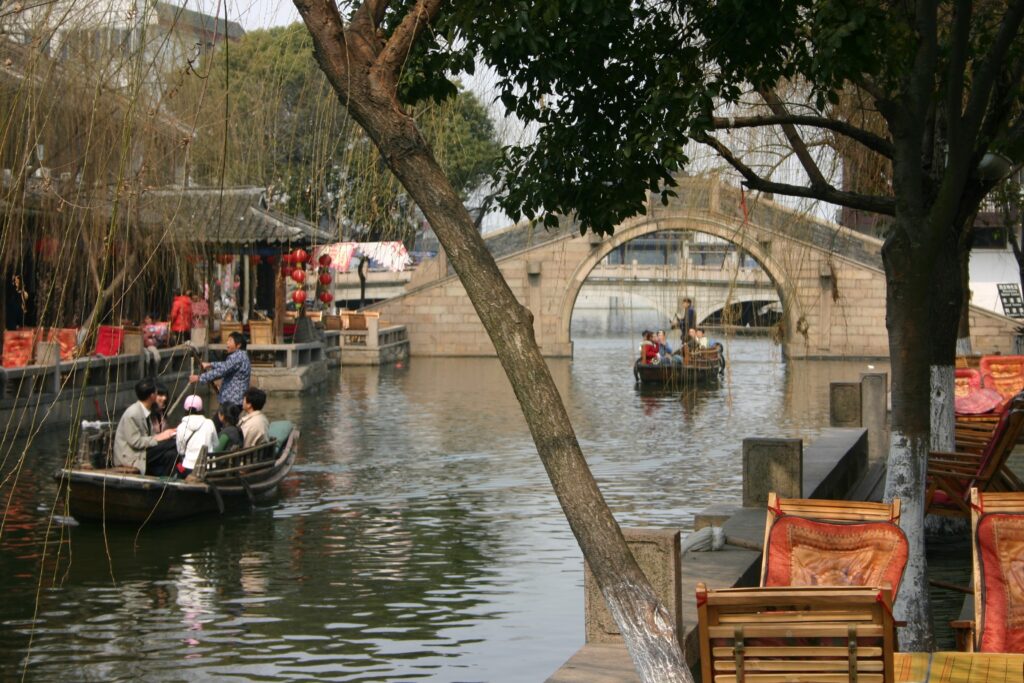
China. I’ve waited a long time to come here. All those years captivated with the magical images conjured up by wonderful stories of this mysterious land. Confucius; The Silk Road; Chairman Mao; Opium Wars; Forbidden Cities; Ming Dynasties; Kublai Khan; Crouching Tigers and Hidden Dragons. And now at last it’s all here, waiting to fill the senses.
Shanghai, actually. The city that’s come full circle in 70 years. The former ‘Paris of the East’ where you could get anything you wanted, with an ‘anything goes’ attitude. Through the isolated, forgotten years, and now unquestionably back in the swing. Still officially communist, but a communism that has embraced capitalism with the energy and enthusiasm unique to this part of the world.
Even the ‘old nobility’ are returning now. On the day we arrive we hear of a husband and wife with combined ages of 159 years who have just come back to Shanghai to open a health-style gourmet restaurant. They left the city for the USA, back in 1949. With their experience, I guess they recognise where it’s at and must know something about how and where to stay young at heart.
Shanghai is again a café society, with an exciting food scene. If you look in the travel guide, along with the expected references to Chinese, Indian, and Western, you will also find a selection of restaurants serving ‘Revolutionary Cuisine’. Apparently these are aimed at former Red Guards, now in middle-age and craving for the nostalgia and character-building years spent together being re-educated in the great north-eastern wilderness. Here, they can network and eat cornmeal gruel and wild vegetables under portraits of Chairman Mao just like in the good-bad old days. Chao jian jiao – stir-fried red chillies – are also on the menu because The Chairman believed that eating hot food produced good revolutionaries.
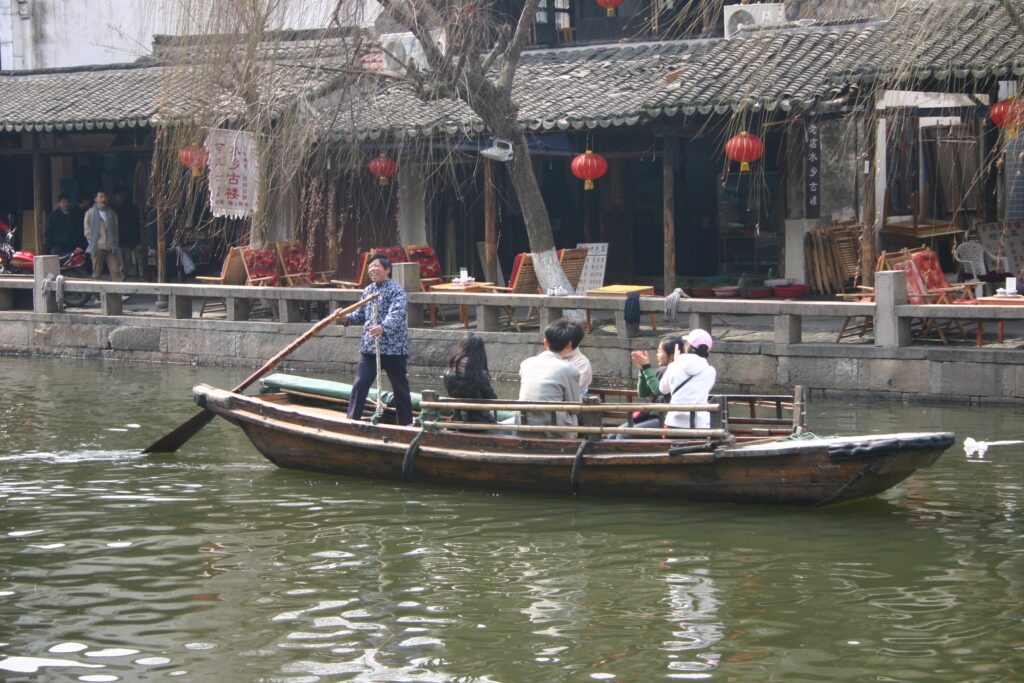
Many of the restaurants are in the beautiful old colonial buildings in what was once the French Concession, stretching across the southern section of the city. If you wanted to categorise the architecture here in the same way that the restaurants are categorised, there would basically be three classes: ‘Chinese’, ‘Western Colonial’ and ‘Modern’. ‘Modern’ is sweeping relentlessly upwards across the whole city at a breathless pace, but thoughtfully leaving behind charming pockets of ‘Colonial’ and ‘Chinese’. One of these is China Town. Yes, believe it or not, Shanghai has a ‘China Town’, the original walled city detached by the encroachment of its neighbouring Western concessions.
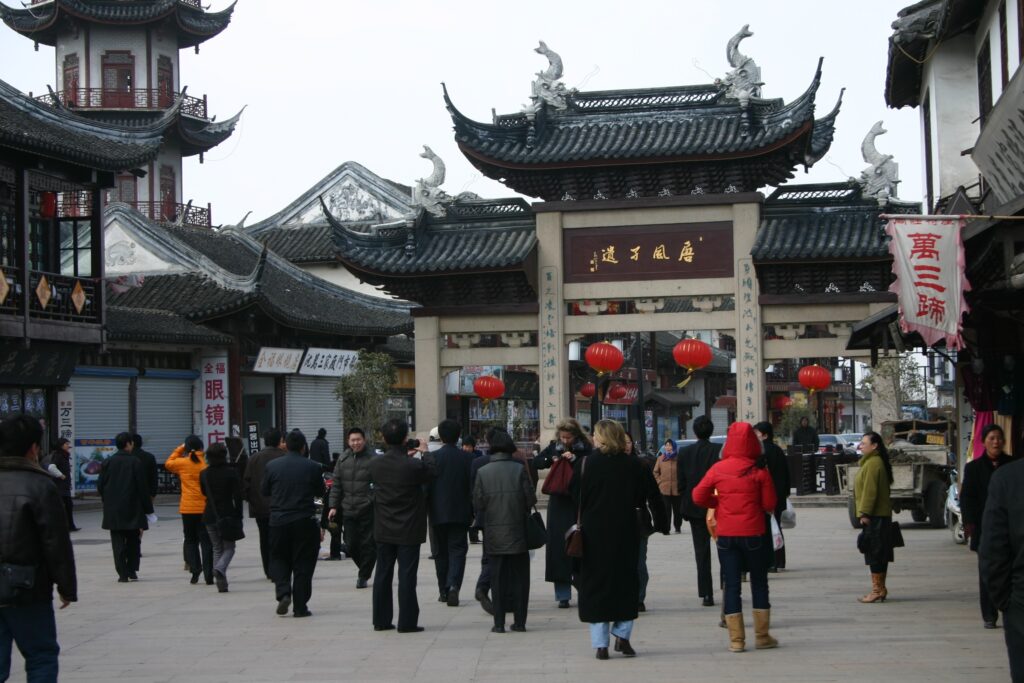
Noel Coward described Shanghai as a cross between Brussels and Huddersfield. It has such a variety of styles that you could probably liken it to almost any city in the world. But having lived (well, perhaps ‘lived’ is an overstatement) in Huddersfield for a number of years, I am struggling to see a genuine connection on this count!
But down to business.
We are here in Shanghai for the release of the Chinese version of our Recipe Management system at the Food Ingredients Asia exhibition. It’s a great opportunity for us. We had to come here – as the old Chinese proverb goes: “Man who waits for roast duck to fly into mouth must wait very, very long time”.
It’s a thrilling experience travelling from our hotel to the exhibition centre. Twenty years ago the roads would have been full of harmless cyclists. Then later, scooters and cyclists. But now thousands of cars, scooters, and cyclists, all competing for the same road space. If we could only put together the few necessary Chinese phrases we would explain to our driver that we have all the time in the world to get to the exhibition. But we can’t, and he seems to think that its life or death, or even a matter of honour, to get us there in record time. We leave behind us a wobbly trail of cyclists and multiple near-misses, yet no road rage or hot tempers. These are philosophical people.
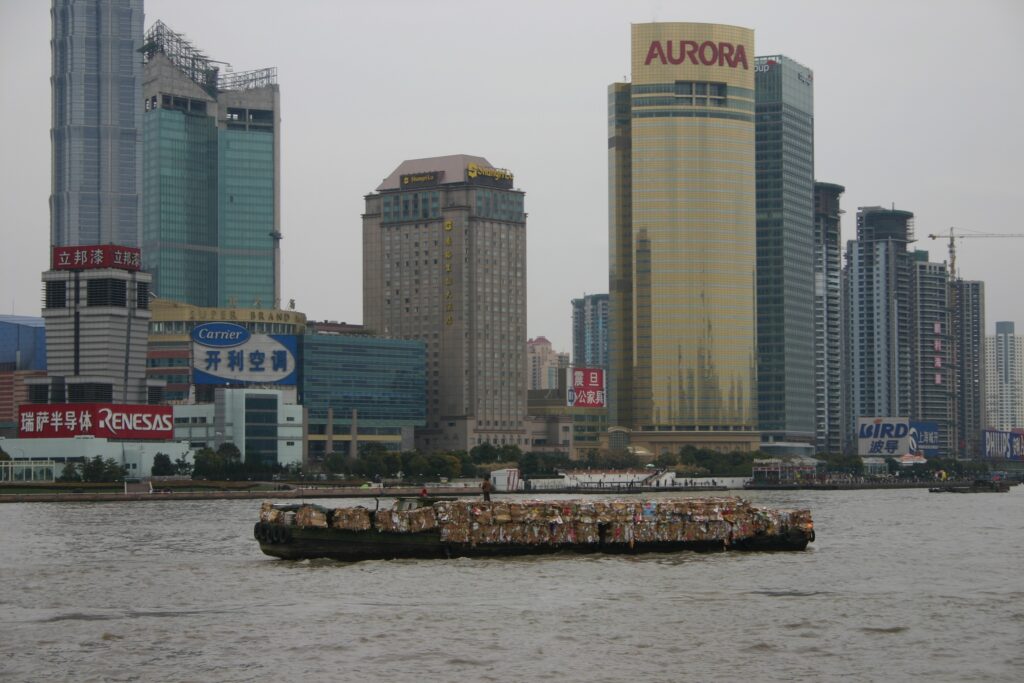
Incongruous sights are all around. A fashionable lady trolley-bus driver struggles to re-connect her overhead trolley cable. We watch in fascination as she climbs onto the roof of her bus in her 3-inch high heels, taking it all effortlessly in her stride.
And crossing the road is a challenging experience. Elsewhere in the world, a green light for pedestrians means “now it’s safe to cross”. Here it means “if you are determined to cross this road, this is as good as it gets. But try to avoid the cyclists, taxis, and trolley buses who also see it as a green light for them”.
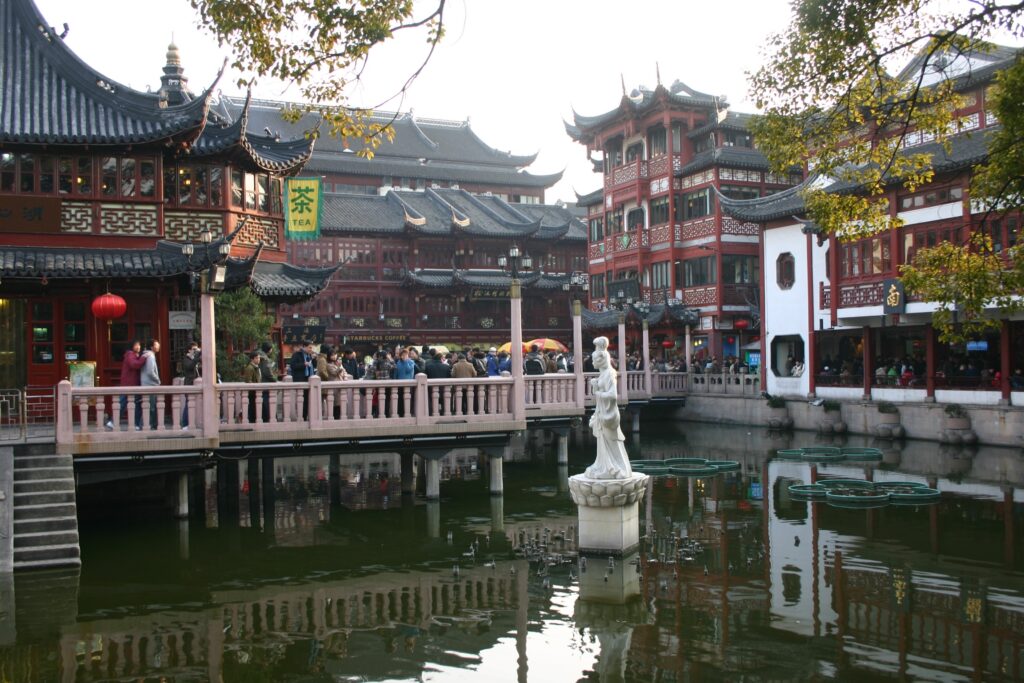
So, here we are at the exhibition, still alive and in one piece.
I am always faintly amused at the claims to fame of the companies at food exhibitions. I think it’s the attempt to make what are usually pretty boring activities sound captivating (“130 years in gelatine” boasts the German company at our neighbouring stand). But this time, being China, we have a host of happy-sounding names to enliven proceedings. Nothing so dull as ‘Unilever’ or ‘Northern Foods’. Here it’s “The Bright Cheese and Butter company”, “The Sun Moon and Star Protein Company”, “Golden Sunshine Engineering”, “WonderSun Dairy”, “Soon True Enterprise Company”, “Bright Moon Seaweed group”, and “The Wonderful Vegetable Protein Technology Group”.
And of course “Hamilton Grant Software Ltd.” or “The Everbright Software Company (20 years of happy programming)” as we are to be known from now on.
This is an exhibition full of cheerful enterprises promoting the old Chinese proverb “A smile will gain you ten more years of life”
At the end of the week we have some free time to see the sights. We decide to take a tour to one of the ‘Water Towns’ in the canal system an hour’s drive from Shanghai. The tour company’s brochure gives us the option of a ‘Deluxe Tour’ featuring a ‘Smiling professional tour guide’, or a ‘Comfortable Tour’ with a ‘Smiling tour guide’. We get Julie, a fashionable and modern Shanghainese girl about town.
Julie works at a fast pace. She delivers a potted history of China faster than the famous Maglev train (430 kph) delivers travellers from Pudong International airport into Shanghai. She needs hardly an intake of breath. It seems that everything in China happened either ‘before liberation’ or ‘after liberation’ and she has a cute way of describing things by asking herself a question and then proceeding without pause to answer it:
“After liberation everyone paid same, no matter what job. But then we have problem why? because lazy people don’t make big contribution……… Grand Canal system started in Sui Dynasty. But Emporer not good why? because canal built for own pleasure……But later good why? because canal used to carry goods between North and South China………Many Shanghai people come to Water Towns at weekend in Autumn why? to eat Hairy Crab local delicacy……….Red lantern good why? because red colour of fire and Chinese people believe fire very important to life…….. If someone marry or baby is born, family hang out red lantern why? because people know can go into house and be happy. If someone die, family hang out white lantern why? because then people know not to go into house and be happy………Many Chinese men have bird for pet why? because can take bird for a walk in cage, meet friends, hang cage in tree, sip tea, especially when no TV, no entertainment……In Chinese opera, we know this man very bad why? because mask completely white………..This man only a little bit bad – maybe selfish or something why? because mask partly white, partly pink…..Widow wear this special dress why? because then people know that she is widow………….”
It must be the jet-lag, because by the end of the visit we are exhausted. But we haven’t finished yet – there’s just time to take in a trip to a silk factory.
The silk worm, what a fascinating creature. It goes through all the usual stages that grubs and worms usually go through, but it makes sure that it wraps it’s offspring in a lovely warm cocoon in its favourite mulberry tree. Then a human being goes round and collects nine out of ten of these cocoons and takes them to a silk factory.
The industrial process is beautiful in its simplicity – from insect cocoon to finished product in 20 metres of factory space.
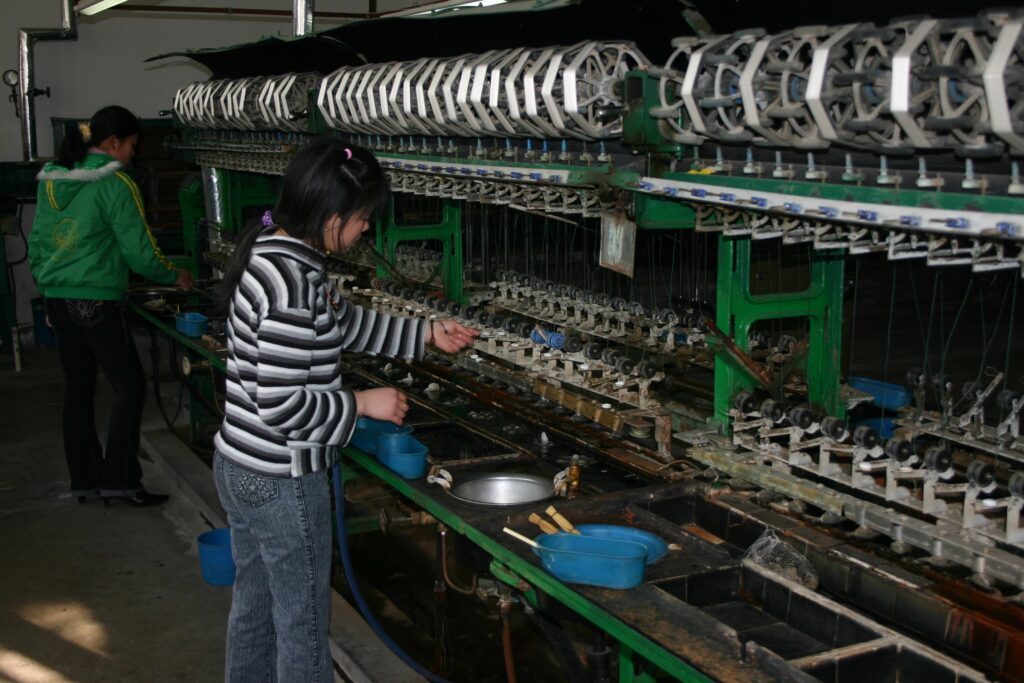
The cocoons are divided into two types: those with a single grub inside and those with two grubs inside. (You don’t need any X-ray equipment, just put the cocoon to your ear and shake it – you can hear the difference).
The ones with a single grub are the most valuable because they have been made by a single worm and it’s easy to find the end of the silk and unravel it. In the factory they float them in a warm-water channel, ten to a group, and simply connect the ends into their spinning system.
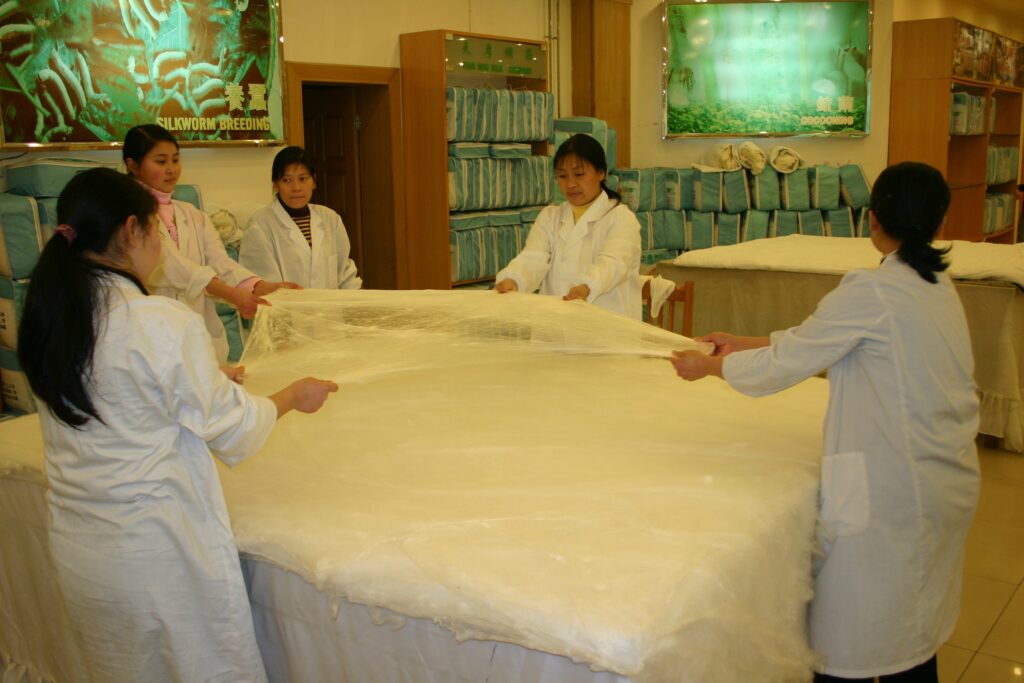
The ones with two grubs were made by two worms spinning around together, so the cocoon, although the same beautiful silk, is a tangled mess impossible to unravel. So these are put into warm water, pulled apart by hand and the grubs extracted. (The grubs are sent off to become Chinese medicines and face creams). The cocoon is then stretched over an inverted U-shaped bar. Ten of them are put together. (At this stage I am invited to punch my fist through the cocoons. When I try and fail, our factory guide proudly tells us that they are used in bullet-proof vests!) Finally, they are handed to four girls standing around a table the size of a bed. The girls pull the cocoons to stretch them to bed-size after which they are used in duvets – the perfect filling, beautifully light, warm in winter, and cool in summer.
Too soon it’s time to be leaving Shanghai for home, and waiting at Pudong International airport, a newspaper story catches my eye. Archaeologists have long marvelled at the longevity of ramparts in Chinese cities dating back to the Ming dynasty. It seems they now have the answer: porridge. A porridge mixture was used in the mortar of their brick structures, which, in the same way that it protects Scots from the harshest northern weather, has preserved these walls from all adversity.
And finally, remember the old Chinese proverb: “To attract good fortune, spend a new penny on an old friend, share an old pleasure with a new friend and lift up the heart of a true friend by writing his name on the wings of a dragon.”